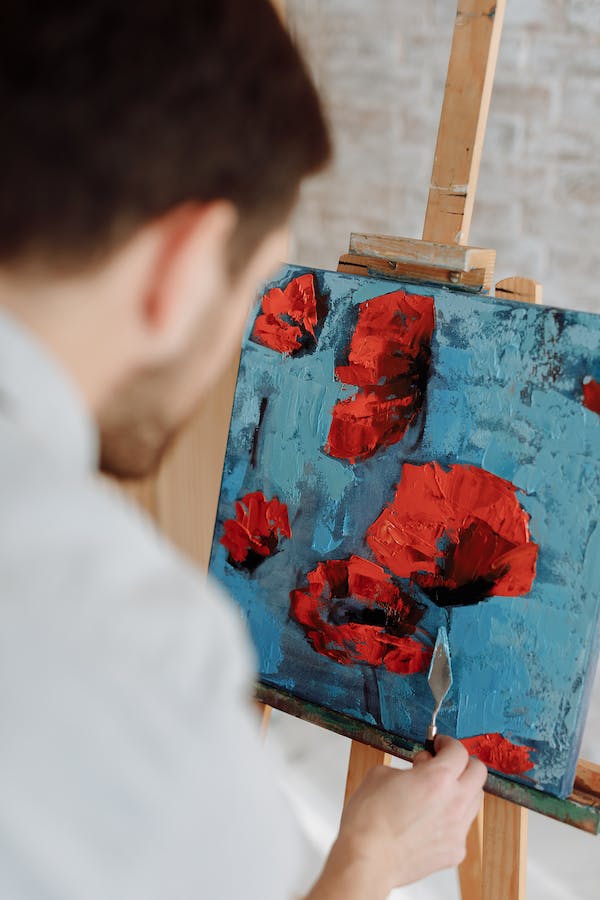Art has always been a powerful form of expression, allowing us to convey our thoughts and emotions in ways that words cannot. But did you know that art can also be used as a tool for healing and self-discovery? This is where art therapy comes in – a unique approach to mental health that harnesses the power of creative expression to help individuals process their emotions, reduce stress, and find new insights about themselves. In this blog post, we’ll delve into the world of art therapy and explore how it can benefit people from all walks of life. So grab your favorite art supplies and let’s get started!
Introduction to Art Therapy
Art therapy is a form of psychotherapy that uses art-making as a way to help people explore their emotions, thoughts, and experiences because it can be used to treat a wide range of mental health issues, such as anxiety, depression, PTSD, and addiction. Art therapy can also be used to improve overall well-being and foster self-discovery.
The goal of art therapy is to help people express themselves in a creative and safe way and the process of making art can be therapeutic in itself, providing a space for self-reflection and exploration because art therapists are trained to understand the psychological process behind making and viewing art, which they can use to help guide clients through their own healing journey.
If you’re interested in exploring therapy, there are many ways to get started. You can find an art therapist in your area or take an online class. You can also simply start making art on your own at home. There are no wrong ways to do art therapy; the most important thing is that you’re expressing yourself in a way that feels comfortable and safe for you.
Benefits of Creative Expression in Art Therapy
Creative expression in art therapy can offer a number of benefits for those who participate. For some, the process of creating art can be therapeutic in and of itself. Therapy can also help people to express emotions and thoughts that they may be struggling to communicate verbally. The creative process can also provide a sense of accomplishment and boost self-esteem.
Therapy can be an effective treatment for a wide range of mental health issues, including anxiety, depression, and trauma. It can also be used to help with physical healing, such as reducing stress and pain. Therapy has been shown to be beneficial for people of all ages, from children to adults.
If you are interested in exploring art therapy, there are a few things you should keep in mind. First, it is important to find an experienced and qualified art therapist. Second, be prepared to commit to the process – art therapy is not a quick fix, but rather a journey of self-discovery and healing that takes time and effort. Trust your instincts – go with your gut feeling about what feels right for you and what you want to get out of the experience.
Types of Art Therapy
There are many different types of art therapy, each with its own unique approach and benefits. Here are some of the most popular types of art therapy:
1. Music therapy: This type of therapy uses music to help people heal from emotional trauma or stress. Music can be used to help people relax, feel more positive emotions, and even boost self-esteem.
2. Visual arts therapy: This type of therapy uses visual arts, such as painting or drawing, to help people express their emotions and thoughts. Visual arts can be used to help people work through difficult life experiences, boost self-confidence, and improve communication skills.
3. Dance/movement therapy: This type of therapy uses movement and dance to help people express themselves emotionally and physically. Dance/movement therapy can be used to improve physical coordination, increase self-esteem, and reduce stress levels.
4. Drama therapy: This type of art therapy uses acting and role-playing to help people explore their emotions and thoughts. Drama therapy can be used to build self-confidence, improve communication skills, and increase empathy levels.
Techniques for Engaging in Art Therapy
There are many different techniques that can be used in art therapy to help people heal and discover more about themselves. Some of the most common techniques include:
– Drawing: This is one of the most basic and commonly used techniques in art therapy. It can be used to express emotions, thoughts, and experiences.
– Painting: Like drawing, painting can be used to express emotions, thoughts, and experiences. It can also be used to create abstract images that represent inner feelings or states of mind.
– Sculpting: Sculpting is a three-dimensional form of art that can be very therapeutic. It can be used to express emotions, release stress, and work through physical pain.
– Collage: Collage is a technique that involves creating an image by combining various materials such as paper, fabric, photos, etc. This can be a very creative and freeing way to express oneself.
– Photography: Photography can be used in therapy in a number of ways. It can be used to capture moments and memories, document changes during the healing process, or simply express creative ideas.
How to Find an Art Therapist
If you’re seeking help for yourself or a loved one, you may be wondering how to find an art therapist. Art therapists are mental health professionals who use the creative process to help people explore their emotions, improve their mental and physical well-being, and resolve personal conflicts.
There are a few different ways to find an art therapist. You can ask your primary care physician for a referral, search online directories such as the American Therapy Association’s Find a Therapist tool, or look for therapists in your area who specialize in art therapy.
When meeting with an art therapist for the first time, be sure to ask about their experience and training. It’s also important to feel comfortable with the therapist and feel like they understand your needs. If you’re not sure if art therapy is right for you, ask about other types of therapy that may be helpful.
Resources for Practicing Art Therapy on Your Own
Art therapy is a process that can be done with any type of art supplies. The therapist will help the client to use the art materials in a way that is helpful for exploring emotions, thoughts, and experiences. The therapist may also provide guidance in how to interpret the artwork that is created. Therapy can be used to work through a variety of issues such as anxiety, depression, trauma, and grief.
There are many resources available for practicing art therapy on your own. One great resource is online courses. These can provide structure and support as you work through the process of using art to heal yourself. There are also many books available on the subject of art therapy. Reading about others’ experiences with art therapy can be very helpful in understanding how the process works and what you can expect from it.
If you are interested in pursuing therapy but are not sure where to start, consider talking to your doctor or mental health provider about a referral to an art therapist. Many therapists offer free initial consultations, which can give you a chance to decide if art therapy is right for you.
Conclusion
Therapy has been shown to be an effective tool for self-discovery, healing, and growth. It can help us cope with grief, trauma, and other difficult emotions. By engaging in art-making activities, we can gain new insights into ourselves and our relationships with others. Therapy provides us with the opportunity to explore creative expression while developing a deeper understanding of ourselves and the world around us. Through art therapy, we can create meaningful works of art that reflect our stories and journeys in life.










